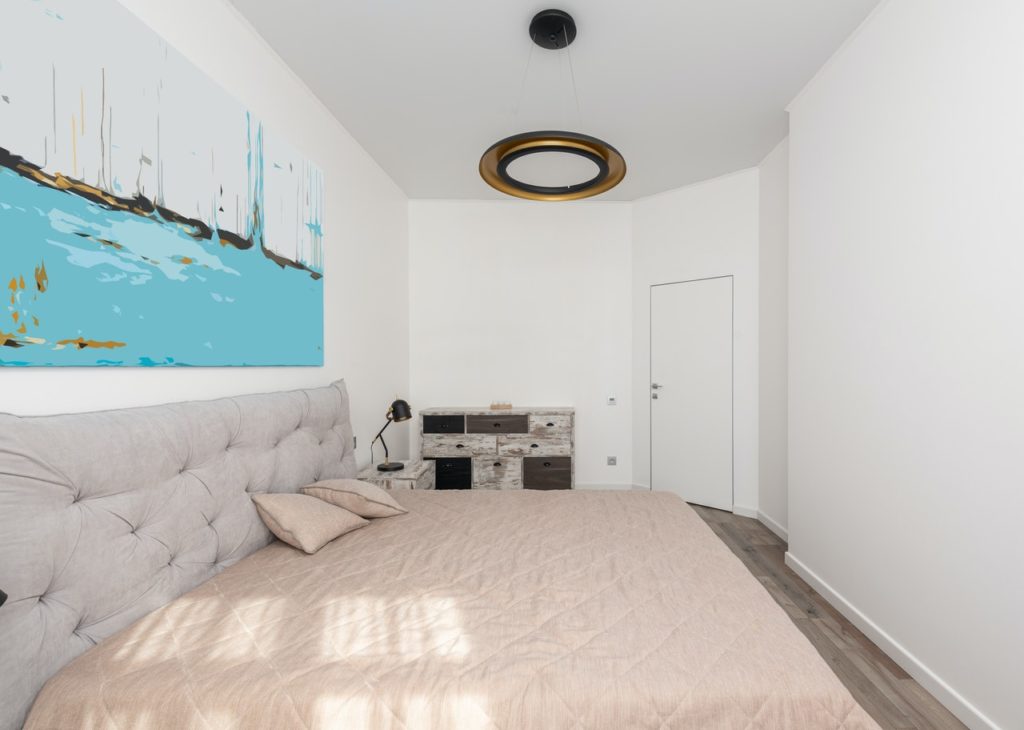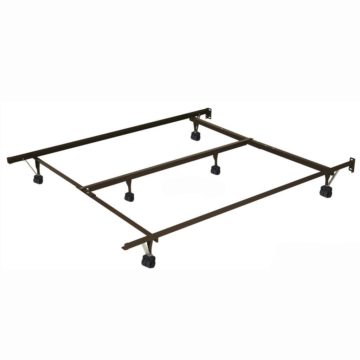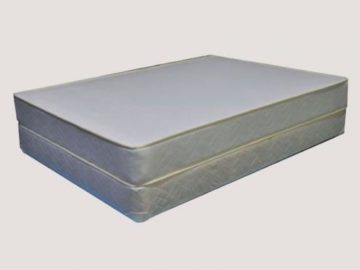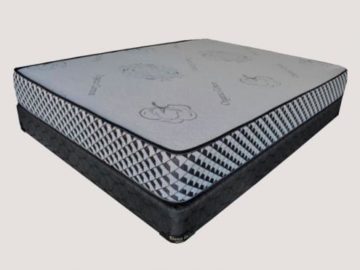
Indeed, mattress is a necessity, which means it cannot be overlooked when shopping for essential things in the bedroom. But, more importantly, there are vital things to check off your list before making a final purchase.
Out of the many characteristics to consider when shopping, mattress firmness should top the list. Why is that? It is what determines if you would experience a good rest or not. The challenge many people often have in this area is not validating the firmness of different mattresses in the store. Hence, finding the right level of bed becomes almost impossible. Luckily, this guide will show you just what you need to do.
What is Mattress Firmness?
Many potential mattress buyers often assume mattress firmness to be the same as support. While that might stand as a valid point, it doesn’t fully describe this characteristic. Though they are similar, the difference is what makes it a critical factor in choosing the right mattress.
Mattress firmness has to do with the hardness of a mattress. So, this means beds can be hard or soft, and the harder it is, the firmer it is described to be. That being said- the firmness of a mattress determines the general support and comfort it offers, and this is not dependent on the size of the mattress alone.
Why Does Mattress Firmness Matter?
Mattress firmness is not only a critical aspect of mattress purchase, but it also seriously impact the level of support the bed gives and the comfort received. The firmness, which is fundamental, determines almost all the crucial characteristics that define your mattress and should never be disregarded.
What Does One Firmness Fits All Mean?
The phrase “One firmness fits all” describes a type of firmness that fits more people than the rest. The majority of sleepers, about 80%, would prefer to lay on beds with a firmness scale that ranges between 5 and 7. This range will make it safe to conclude that the firmness range likely to fit the majority in the mattress market is 6.
Although, many are still arguing the possibility of the one size fits all as it might seem inappropriate. Nevertheless, it doesn’t stop a vast majority from preferring the medium-sized mattress even when the argument against it might be valid.
However, it is important that before purchasing a mattress, you don’t settle for just any level of firmness; rather, check to see if the bed is reliable and supportive to your body type. This is key because many beds in the market are focused solely on the medium feel.
Firmness vs. Support
Another major thing to consider before purchasing is to distinguish firmness and support clearly. As clearly stated already, these two are not the same but are interwoven. In fact, a bed can appear firm but not offer the support needed, which could be due to the low-quality material used.
How then do you now make this clear distinction?
For instance, if you have gotten the bed you want, try to lay on it; the feeling of that initial laying gauges the firmness. Now, support comes to play when your spine remains great and in perfect alignment after lying down for long.
Although most people think that a hard mattress means that firmness and support are guaranteed, but a soft mattress can also be as supportive as imagined. The only restraint is the different pressure points of some soft mattresses as they can act against the produced firmness.
The purpose of a great mattress is to relieve pressure, which is a criterion to check out for when planning to purchase. If a mattress doesn’t give the contouring that side sleepers would term as support, it won’t be a good pick. Whatever sleeper you might be, clearly account for firmness and support and place them as important factors when purchasing.
Our Firmness Scale and Chart

· Extra Soft (1-2)
This level of firmness is not advisable to be used because it is exceptionally soft. This implies that it can’t offer your spine the proper support it deserves as it sinks in greatly. Hence, settling for this type of bed is uncomfortable and highly dangerous.
· Soft (3-4)
This type of bed has a sinkage range between 1.5 and 3 inches. They are not for everybody but just for side sleepers as they could be injurious to back and stomach sleepers. You will find these plush soft beds in two forms- the traditional memory foam and cushion hug.
· Medium (5-6)
On the mattress firmness rating, the medium beds are offer preferred by a majority. They are also the most common and reviewed in the market because of their wide acceptance among many. If you buy a medium-firm bed, you can be sure of a sound sleep regardless of your sleeping position.
· Hard (7-8)
The majority of the hard bed users usually find it harder than the regular medium bed as they sink less. They also don’t give the same amount of hug as the firm mattresses, but that is the intention of the hardness of hard beds. This type of bed accommodates only back and stomach sleepers, except side sleepers.
· Extra Hard (9-10)
The extra hard mattresses give different firmness to the user. They are not primarily used and produced because very few people will purchase them except for therapeutic purposes.
What Level of Comfort is Good For You?
Different factors determine the comfort level that is right for you. But the four major factors are sleeping position, pain, sex, and weight. Before concluding on any purchase, check with these factors, then follow through with the guide below.
1. Sleeping position

· Stomach Sleeper
These sleepers concentrate their weight on the stomach, which means they need a bit of sinkage to hold up. Therefore, the firmness range they need is between 5 and 7 as the proper contouring and firmness will give the body the support necessary.
· Side Sleeper
Unlike the stomach sleepers, side sleepers need soft mattresses within the range of 3 and 6. This is important because they tend to have pressure points on the hips and shoulder due to their sleeping position. So, the best bet to alleviate such pressure is to settle for a very soft mattress.
· Back Sleeper
Back sleepers are not particularly rigid towards mattress firmness as they can enjoy a wide range of 4 to 8 without complications. So, keep in mind that you will want the support needed as a back sleeper within this range.
2. Sex
· Female
Generally, females need a mattress that is very supportive of their delicate body, which means they need medium-firm beds. Regardless, the sleeping position should also be considered before concluding because that is a vital factor.
· Male
Because of the general bodyweight of men, they would need a bed firmer to sustain that weight and keep the spine well-aligned. But, this shouldn’t prevent a male from settling for a different one if their weight or sleeping position differs.
3. Weight
· Light
It is recommended that light people go for a bed with a firmness range between soft and medium. This range is perfect for the bodyweight as it won’t add so much pressure that causes it to sink. Plus, it will give the body the necessary contour it requires. A higher fitness range will create pressure points on the user’s body, making sleeping on it very uncomfortable.
· Heavy
Generally, heavy people are comfortable sleeping on beds that are either medium or hard and nothing lesser. This is because their weight makes any other type of bed fitness lesser than medium sink faster. So, if it is not firm or medium, it might not give them the support and satisfaction their body needs. More importantly, the thickness of the range between medium and firm should be 10 inches or above mainly because it is a critical factor to giving consistent support for a long time.
4. Pain
· Hip Pain
The best bed type to look out for is the medium or soft bed if you have hip pain. This is to help provide the support that your lower back needs to feel strong. Because of the cause of hip pain, which is often due to spinal misalignment, it is best to manage such a situation with this range of firmness.
· Back Pain
Back pain can best be handled by mattresses that are suitable for stomach and side sleepers. As mentioned above, this range will be between 5 and 8 and should also depend on your weight.
· Shoulder Pain
Shoulder pain usually occurs mainly to side sleepers sleeping on an extra firm mattress. This happens because their sleeping position concentrates the pressure point to the shoulder. Hence, the correct type of mattress firmness to settle for should be between 3 and 5. This range is softer and not too firm to cause pain in your shoulders.
Bonus tips before your final decision
1. Consider Your Partner
We have been focused on one person up till now, but very importantly, your partner is also a significant factor. If you want to have a sound sleep with someone else on your bed, then considering motion transfer is vital. Some mattresses are a handful of motion transfer, while others have minimal or no traces. Before making any mattress purchase, check to see if the bed will prevent you from feeling the movement of your partner. So, depending on the level of motion transfer you want, settle for it and ensure to check in with your partner to see how the sleep pattern can influence the purchase.
2. Sleeping Position
Though this has been stated before but it requires more emphasis. Sleeping position is one of the primary vital points you consider before buying a bed because it cannot be changed. Since you cannot be conscious of how you sleep, give yourself the best by choosing a mattress that accommodates your different sleep positions. This will help to keep your spine always aligned and your body healthier every day.
3. Night movement
The big question is, “do you move at night?”. There is no problem at all if you do, but your mattress must align with such movement. Firm beds can accommodate such movement in the night as they readily contour your body when the position is changed. This is unlike most older mattresses that sink when such movement occurs. So, put your night movement into account before making a final purchase.
4. Weight
Weight also needs to be emphasized as it is added to the pressure on the mattress. This is why the mattress type must sync with the pressure being applied to prevent avoidable pain. Also, your body needs to be aligned and relaxed when on the mattress; if you aren’t feeling any of these, it can become more severe. So, pressure relief and spinal alignment should top your list in this factor.
5. Soft or Support
Many people love the feel of a plush mattress that just sinks when they lay on it, but there could be dangers to it. Though they might be comfortable, they may not provide the support your body needs, translating into significant issues after a while. Instead of settling for softness, your body needs you to settle for support when purchasing a bed.
6. Safe ground
If you are oblivion on many of these factors already listed, and you don’t know which one to go for, medium firmness is your safe bet. It is used by the majority and offers the support they need, which means if you also get a mattress ranging from 5 to 6, you can enjoy the same.
7. Follow your heart
Eventually, you will have to decide, which means you have to be sure you want that mattress. If you have to sleep on it to feel like this is the mattress for you, do so. But, this might not be possible on an online market, so weigh your options carefully and go for it.
Frequently Asked Questions
What Does a Plush Mattress Mean?
A plush mattress is soft when first touched but has the necessary firmness and support needed. They are always bulky-looking with quilted covers, but they are designed to fit different specifications.
Does Memory Foam Always Mean Soft?
The simple answer is No. More elaborately, memory foam comes in different types, and they offer incredible responses to your body. Some are firm, others are soft, but not all the same because their construction varies.
Conclusion
Here you go- all that you need to consider before making a bed purchase. No doubt, there is a lot to consider, but ultimately they are all important and should not be dismissed. Remember to check for your weight, sleeping position, patterns, sex, and pain as they all constitute a sound sleep.
Hopefully, this guide has provided the detailed information you need to make a perfect pick for your bedroom. Now is the time to make your decision. Good luck!



